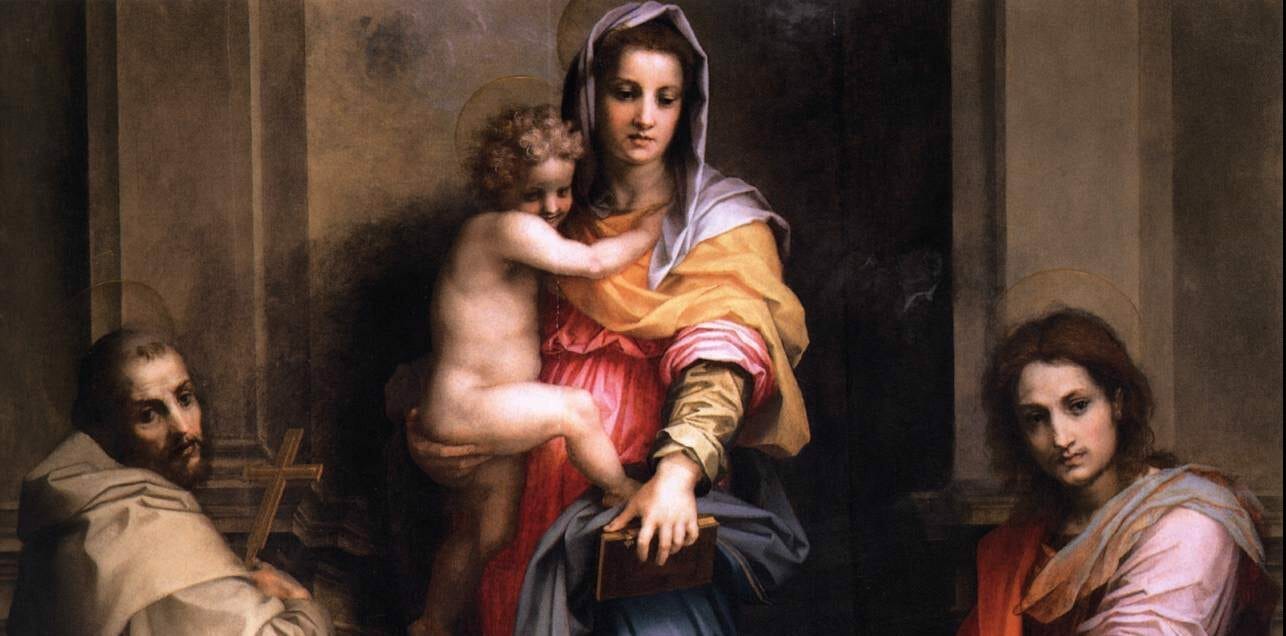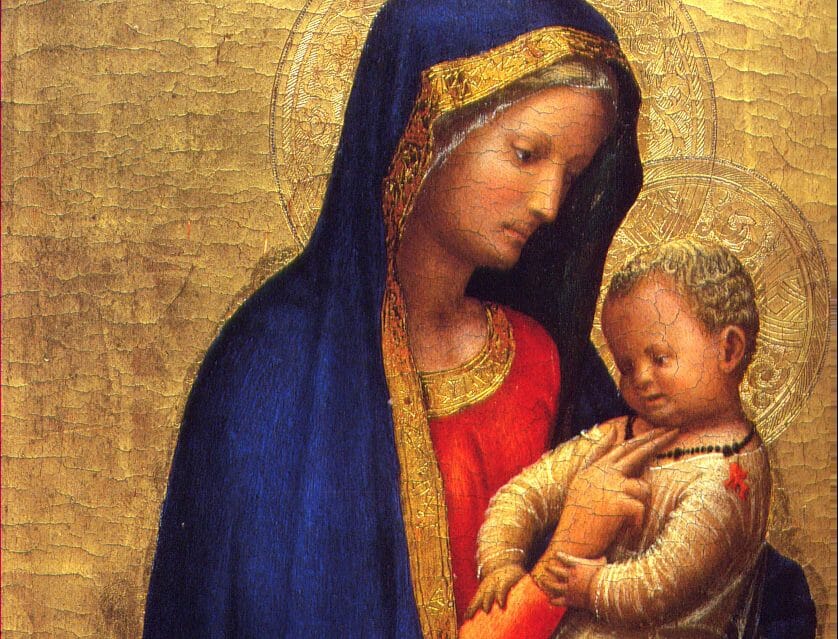
Madonna of the Harpies | Between divinity and nature
Artist
Year
Country
Format
Material/Technique
One of the best-known works by Renaissance artist Andrea del Sarto, Madonna of the Harpies is an altarpiece commissioned for the convent hospital church of San Francesco dei Macci in Florence and probably painted in 1517. It’s now in the Uffizi Gallery in the same city.
The ‘harpies’ of the title are the pagan iconographic images, at the corners of the base. They support the Virgin, who is pictured holding a book and the baby Jesus. On her right stands Saint John the Evangelist. On the left, Saint Francis of Assisi, the convent’s titular saint.
Particular Iconography
It is not rare to find sacred representations with elements from pagan iconography. Many Nativities show some destroyed pagan temples in the background. This symbolizes how the birth of Christ puts an end to a belief that is no longer valid.

In this case, however, the Madonna is not standing on the pedestal to destroy it but to exalt her. This creates a strange dialogue between the Virgin Mary, an icon of salvation, and the monstrous harpies, who were mythical monsters with the wings and form of a bird and the face of a human.
Later iconographic readings claim that the harpies could be linked with the locusts of the Apocalypse. However, this iconography is complex to decode, so much so that an expert writer and painter like Giorgio Vasari could not recognize it. In today’s eyes, the Madonna of the Harpies reveals itself as the exaltation of the divinity and its pagan counterpart, both in the title and the representation.
If it were a film
If this work were a film, it would be The Brand New Testament by Jaco Van Dormael. A cinematographic work that shows us how, after René Magritte, surrealism in Belgium has never waned.
The film gives us insight into God’s life and his daughter with a grotesque and irreverent slant. It represents divinity from an extremely topical perspective: nothing has ever been sacred, everything remains and shines in a pagan key.
Tag
Buy a ☕ for Hypercritic







